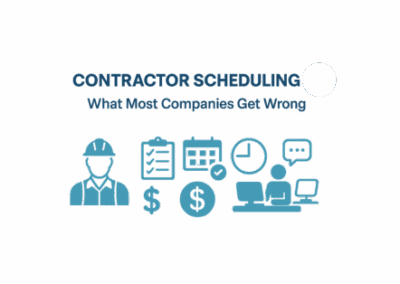If you have worked in a manufacturing plant, you must have witnessed at least one malfunction in one of the machines or equipment. It may not be optimal, but it’s standard for any machine to act up once in a while. The same goes for your workforce. If you’re part of management in the manufacturing industry, you may only sometimes have an actionable plan for such breakdowns. This begs the question: How do you improve your manufacturing management processes without halting your work?
First, let’s define what we mean by manufacturing management!
Defining Manufacturing Management

Manufacturing management encompasses all areas of the product production process. Managing a manufacturing facility entails handling the entire process, from assembly design to packing and shipping the completed product. Manufacturing management includes all aspects of employee work shifts, quality control, and accounting.
Manufacturing management essentials include creating an assembly design, corporate ethics, accountability, and future forecasting. Each step of managing a manufacturing scenario works in tandem with the step before and after to present a smooth-running operation. During their work shifts, members of manufacturing management are often allocated specific jobs or divisions to oversee.
Now that we have a clear idea of manufacturing management let’s dive into how you can manage and improve the inefficiencies in the manufacturing process.
Ways to Improve your Manufacturing Management Processes

Every manufacturing company may benefit from process improvement and operational excellence. The efficiency gained from these enhancements can help you save money, increase production, and improve the quality of your products. Increased sales and profitability will eventually follow, as will a well-polished corporate image.
While the recommended practices will provide the intended outcomes, they will require time, effort, and teamwork. Here are some suggestions for making your company into a fine-tuned production machine:
Engage all of your workers
Employees can find many of the solutions to problems with your manufacturing processes. Employees who do specific duties in the manufacturing process can advise you on how to increase their efficiency. Your executives at the top of the chain likely have a grip on the big picture, but you may uncover smaller opportunities to improve things by addressing your employees and requesting their advice.
Engaging your staff in this manner will not only help your business function more effectively, but it will also give those on the shop floor a voice. Allowing solutions to flow upward creates a more effective communication channel than the usual way of starting at the top and trickling down to the workers.
Control material waste

While waste is not restricted to materials, it is one of the most expensive types. Specific manufacturing processes are labour-intensive and necessitate more attention on labour hour control. Nevertheless, many manufacturing operations require substantial amounts of material, and using it efficiently can result in thousands of dollars in savings each year.
Some waste material can be traced back to the part’s design. Design for manufacturing (DFM) is an engineering method in which items are designed to be easier to manufacture and to make effective use of materials.
Other strategies to contribute to a healthy bottom line include recycling or reusing metal waste and honing tools rather than replacing them.
Leverage business intelligence data.

The information obtained during processes provides a complete tier of data called manufacturing or business intelligence (BI).BI data has multiple advantages:
- BI data can be utilized to improve the overall organization and the supply chain.
- Analytical software can help compare sites and suppliers and point out areas for improvement.
- Examining data can assist managers and technicians in determining what is causing delays at a plant compared to others.
Data reveals positive (or negative) tendencies. It allows you to see patterns that you might not have noticed otherwise. It can even alert you to data gaps as you try to make judgments based on them.
Consider the questions you want answers to since they will assist you in determining what data you should collect.
Build habits of success into your manufacturing management
Discover what you can do to feed a road of growth and achievement. If your only goal is to maintain the status quo, you will fare poorly when change is required. By developing successful habits, you’re initiating the forward motion before you need it so that when the day comes, you’re ready.
What are some of these habits of success?

- Scheduled maintenance.
- Regular employee training.
- Periodic feedback.
- Methodical data gathering.
- Equipment upgrades.
Implementing these habits in your manufacturing management process can make employees feel more confident, enthusiastic and efficient. Moreover, these employees can take advantage of cutting-edge technology and feel more involved.
Implement a work order ticket system
Problem analysis informs the management that something is wrong. Implement a work order system so employees who have problems can resolve them as soon as feasible.
Knowing that an industrial scale needs to be replaced with a more current digital system is only half the battle. Managers must take the initiative and have the means to implement changes as soon as possible. If such tactical measures are not in place, the situation will increase, as protocols and remedies can be time-consuming.
Build flexibility into your schedule
Employee scheduling is most likely one of the most challenging issues in manufacturing management. Dealing with shifts that don’t have enough coverage, anticipating when you’ll need to expand coverage, and dealing with employee time-off requests are pretty complicated, and you must keep repeating the process.

Including flexibility in your schedule certainly sounds like a nightmare. But it’s pretty straightforward if you use the correct time monitoring and scheduling software. When it comes to scheduling, every employer has various requirements. It’s all about shift work and managing overtime so that it doesn’t break the bank for manufacturers.
Flexible Scheduling
With Celayix, you can design schedules faster with flexible scheduling by stating what each shift needs, including restrictions and criteria, rather than defining everyone on each shift. Employees can choose the shifts they want to work and swap shifts with one another using the app. This type of shift planning reduces labour costs while increasing output.
Flexible scheduling is also advantageous to your staff, which is essential in a tight labour market when it is challenging to locate personnel. Having more influence over your schedule appeals to folks who desire a better work-life balance, and it’s a free advantage to give.
Consider using automation in your manufacturing management.
In some ways, the flexible scheduling strategy automates your schedule as well. Instead of having to recreate it each time, design the framework and let employees choose.

Where else can automation be used? What manual processes are you performing that you don’t have to? The manual approach leaves space for human mistakes and can cost you time and extra workers.
A good example is time tracking. Are you still using paper punch cards and manually entering data? How effective has that been in dealing with buddy punching, time theft, or excessive overtime?
Members of manufacturing management are responsible for long-term planning. Management must have clear objectives and targets, whether it is a budget estimate, a hiring programme, or a product growth. The measures that will allow the organization to achieve those goals are then planned, and it is up to management to ensure that the steps are followed.




